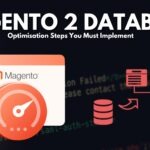- By Kiwi Commerce
- 26 Apr, 2025
- eCommerce Development
Using GraphQL: A Modern Approach to Data Handling in Web Development
At Kiwi Commerce, we’re always exploring technologies that make web development faster, more flexible, and more scalable. One of the standout tools gaining serious traction in recent years is GraphQL.
Originally developed by Facebook, GraphQL has transformed the way developers handle data in web applications. Unlike traditional REST APIs, GraphQL gives developers complete control over the data they request—resulting in faster performance, lighter applications, and far more manageable codebases.
In this guide, we’ll explore how GraphQL is used across popular headless CMS platforms and modern frontend frameworks, and why it’s quickly becoming a go-to solution for high-performance web builds.
What Exactly Is GraphQL?
GraphQL is a query language for APIs. Rather than retrieving fixed data from multiple REST endpoints, it allows developers to request exactly the data they need in a single, efficient query.
This leads to:
-
Faster load times
-
Less redundant data
-
Cleaner, more maintainable code
-
A more streamlined development process
It’s a smart and efficient way to fetch and manage content—ideal for websites that need to stay fast, lightweight, and scalable.
GraphQL in Headless CMS Platforms
The shift to headless architecture has unlocked enormous potential in modern web development—and GraphQL is at the centre of that evolution. Here’s how it integrates with leading CMS platforms:
1. WordPress + WPGraphQL
Traditional WordPress sites rely on REST APIs, but the WPGraphQL plugin changes everything. It enables developers to query posts, pages, users, and custom content types—all through a single GraphQL request.
If you’re considering a headless setup, our headless WordPress guide covers everything you need to know.
2. Contentful
Contentful comes with native GraphQL support, allowing you to query specific content such as articles, metadata, and media with precision. It’s ideal for content-heavy websites that demand top-tier performance.
3. Strapi
Strapi is a popular choice for custom builds. With its GraphQL plugin, developers can query content types, relationships, and user permissions—making it a strong option for eCommerce and highly customisable platforms.
4. Sanity.io
Sanity.io combines structured content with real-time collaboration tools. Its GraphQL integration ensures developers can fetch exactly the content required for any frontend experience.
5. Ghost
Ghost focuses on publishing, and its GraphQL support allows developers to query posts, authors, tags, and more—perfect for dynamic, high-performance publishing platforms.
GraphQL in Frontend Frameworks
GraphQL isn’t limited to CMS platforms—it integrates seamlessly with modern frontend frameworks to provide real-time updates and smoother user experiences.
1. React
React works exceptionally well with GraphQL through tools like Apollo Client and Relay. This allows data to be fetched at the component level, ensuring the frontend only loads what it needs.
2. Next.js
Next.js supports both server-side rendering (SSR) and static site generation (SSG), making it a strong partner for GraphQL. It’s an ideal combination for performance-focused sites with dynamic content.
3. Gatsby
Gatsby uses GraphQL as its core data layer, sourcing content from CMSs, APIs, or local files during the build process. It’s a favourite for fast, SEO-friendly static websites and brands wanting to maximise page speed.
4. Vue.js
Vue developers can integrate GraphQL via Vue Apollo, simplifying API management and making it easier to work with real-time and dynamic data.
5. Nuxt.js
Nuxt.js, the SSR-ready Vue framework, also pairs beautifully with GraphQL. It’s well suited for projects that need strong SEO, performance, and flexible content delivery.
Why We Use GraphQL at Kiwi Commerce
We frequently recommend GraphQL for client projects, particularly where performance, scalability, or complex data structures are involved.
Key benefits include:
-
Efficiency: Request only the data your application actually needs
-
Reduced Load: Fewer network calls and improved performance
-
Flexibility: Customise your queries for ultimate control
-
Real-Time Updates: Tools like Apollo support live subscriptions
For our clients, this results in faster websites, better user experiences, and digital platforms that grow effortlessly with their business.
Final Thoughts
GraphQL isn’t just another trend—it’s a smarter, more efficient way to build modern web applications. Whether you’re using headless WordPress, custom platforms like Strapi, or frontend frameworks like React and Vue, GraphQL gives developers (and businesses) a clear advantage.
If you’re looking to future-proof your website or improve how your content is managed and delivered, now’s the perfect time to explore what GraphQL can offer.
Want to learn more about how colour, content, and performance work together in design? Check out our post on how colour impacts your website design—a deep dive into the psychology behind effective web experiences.
Need help building a GraphQL-powered website or migrating to a headless CMS?
Let’s talk. Kiwi Commerce is here to help you build smarter.



